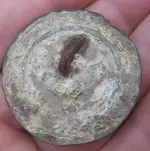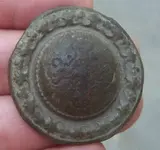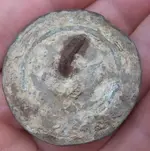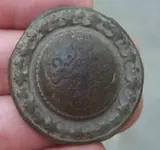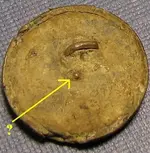Don in SJ
Silver Member
- Joined
- May 20, 2005
- Messages
- 4,937
- Reaction score
- 852
- Golden Thread
- 0
- Detector(s) used
- MINELAB SE Pro
- Primary Interest:
- All Treasure Hunting
I have two of these buttons that were found years ago, do not remember what type of sites and really am not sure of the era ofthese buttons.
The one button is flat(silver wash) but has a ridge around the back that allowed filling lead in for both weight and securing the shank, which I cannot make out exactly what type shank used. The other button(gilted) is very slightly domed, but basically the same, one seems gold gilt and one seems silver wash, perhaps they are even different in age.
So, any good ideas on the age of these buttons?
My rough guesstimate for now is 1780-1790's, but not sure I am in the ballpark or not.
Still looking thru Tice's book, but so far cannot find them but sure they are mentioned in there somewhere.
Don
The one button is flat(silver wash) but has a ridge around the back that allowed filling lead in for both weight and securing the shank, which I cannot make out exactly what type shank used. The other button(gilted) is very slightly domed, but basically the same, one seems gold gilt and one seems silver wash, perhaps they are even different in age.
So, any good ideas on the age of these buttons?
My rough guesstimate for now is 1780-1790's, but not sure I am in the ballpark or not.
Still looking thru Tice's book, but so far cannot find them but sure they are mentioned in there somewhere.
Don



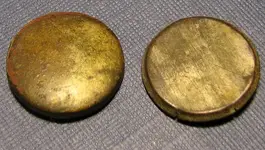
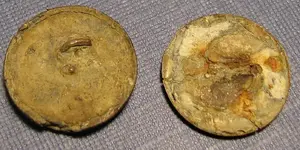
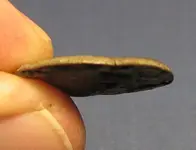
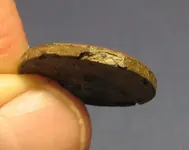

 the one on the right, I could only find a lead one similar(pie dish shape) which dated to 17thc
the one on the right, I could only find a lead one similar(pie dish shape) which dated to 17thc 


